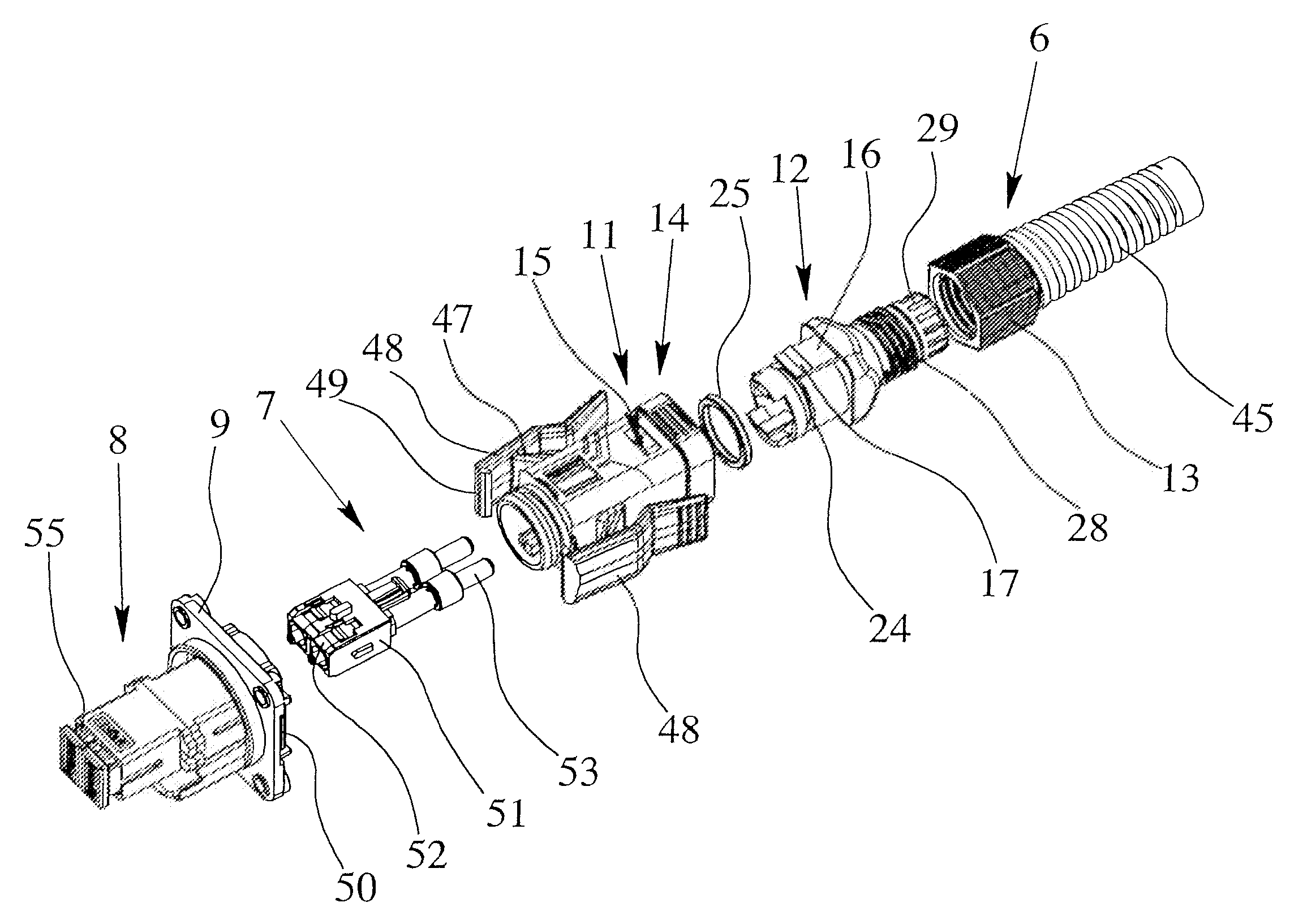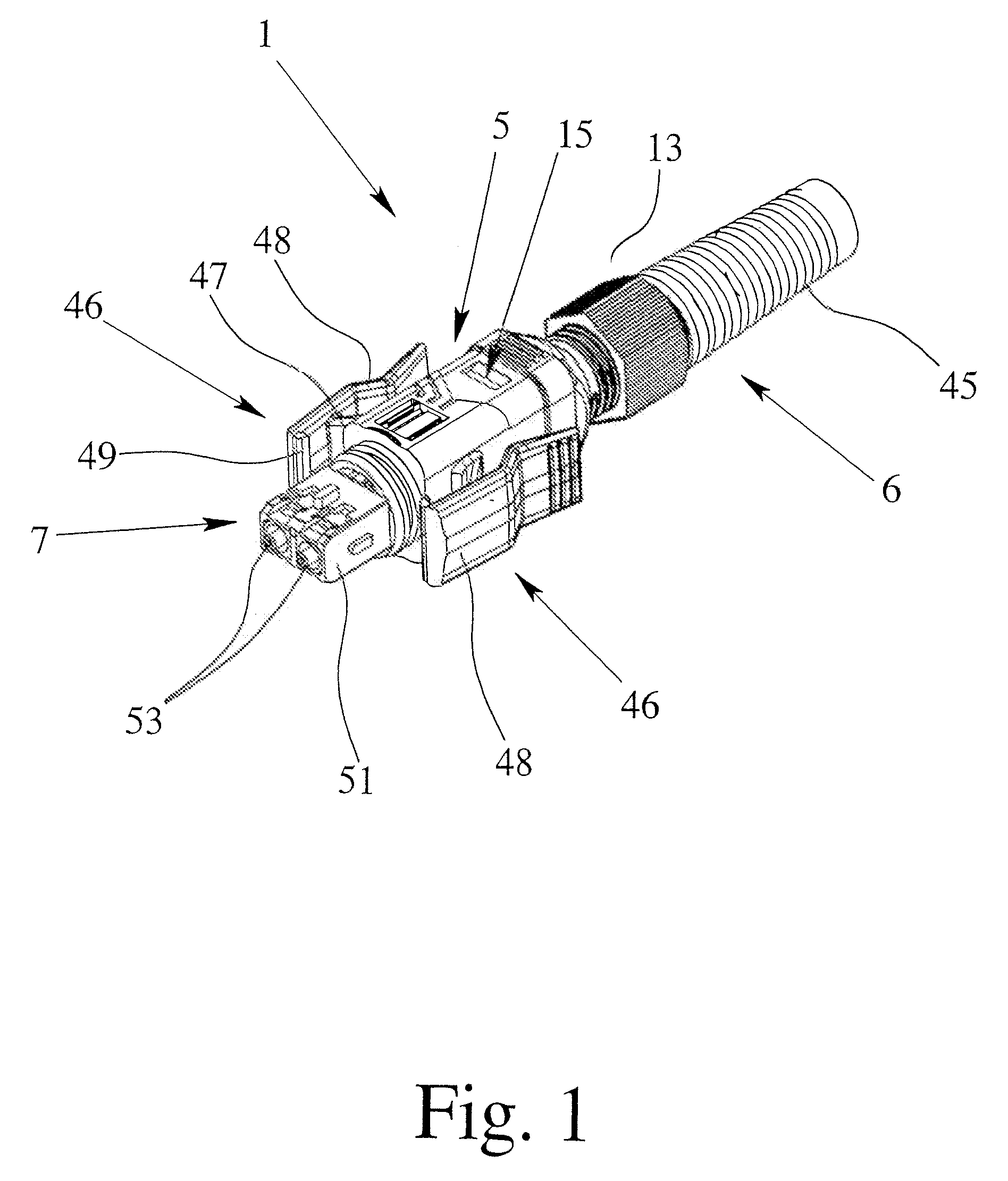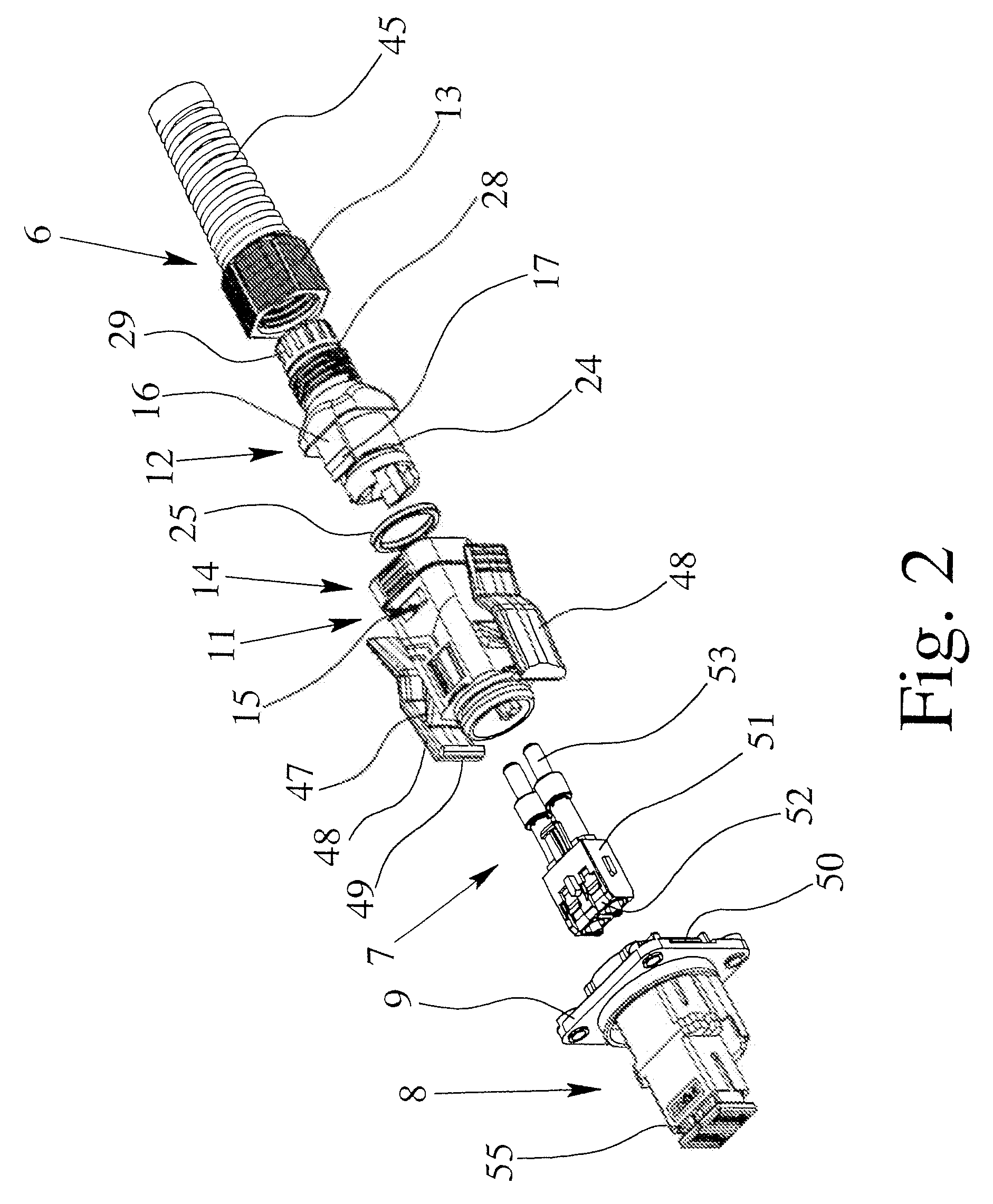Connection device with a cable gland having housing parts enabling relative movement therebetween
a technology of connecting device and housing, which is applied in the direction of coupling device connection, optical elements, instruments, etc., can solve the problems of hindering the axial movement capacity of the plug housing, which is necessary for unlocking the plug, and can only be used very conditionally in a rough industrial environment. , to achieve the effect of simple mounting and dismounting capacity
- Summary
- Abstract
- Description
- Claims
- Application Information
AI Technical Summary
Benefits of technology
Problems solved by technology
Method used
Image
Examples
first embodiment
[0036]In the connection device 1 of the invention, which is shown in FIGS. 1 to 4, the housing 5 has a first housing part 11 for holding the plug 7 and a second housing part 12 for connection to the cable gland 6 which has a union nut 13. The housing 5 is thus made in two parts, as is apparent especially from FIG. 2. In this connection, the first housing part 11 has a connecting area 14 which is made such that the first housing part 11 can be locked to the second housing part 12. However, in this connection, it is important that the locking between the first housing part 11 and the second housing part 12 is made such that axial displacement of the first housing part 11 relative to the second housing part 12 is possible, the axial displacement however being limited.
[0037]In this connection, in the connecting area 14 of the first housing part 11, a window 15 is formed which, in the mounted state of the first housing part 11 and the second housing part 12, is engaged by a projection 17...
second embodiment
[0042]the connection device 1 shown in FIGS. 5 to 7, likewise, has a housing 5, a cable gland 6 and a plug 7 for connection of the fibers of the optical fibers 3, 4 of the fiber-optic cable 2. However, in contrast to the above described embodiment, here, it is not the housing 5, but the cable gland 6 which is made in two parts. The cable gland 6, in addition to the union nut 13, has a sleeve-shaped part 31 with an outside thread 32 onto which the union nut 13 can be screwed. In terms of its external shape, the sleeve-shaped part 31 is similar to the cable-side end of the second housing part 12 as shown in FIGS. 1 to 4.
[0043]The end of the housing 5 assigned to the cable gland 6, in turn, has a connecting area 33 which is shaped differently and which is made such that the sleeve-shaped part 31 can, on the one hand, be locked to the connecting area 33, but on the other, can be moved axially to a limited degree.
[0044]For this purpose, several recesses 34 are formed in the sleeve-shaped...
PUM
 Login to View More
Login to View More Abstract
Description
Claims
Application Information
 Login to View More
Login to View More - R&D Engineer
- R&D Manager
- IP Professional
- Industry Leading Data Capabilities
- Powerful AI technology
- Patent DNA Extraction
Browse by: Latest US Patents, China's latest patents, Technical Efficacy Thesaurus, Application Domain, Technology Topic, Popular Technical Reports.
© 2024 PatSnap. All rights reserved.Legal|Privacy policy|Modern Slavery Act Transparency Statement|Sitemap|About US| Contact US: help@patsnap.com










